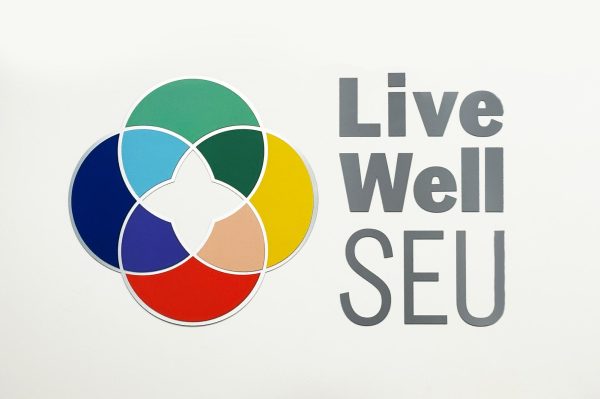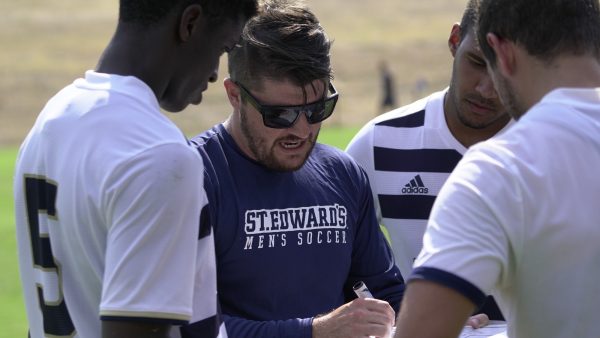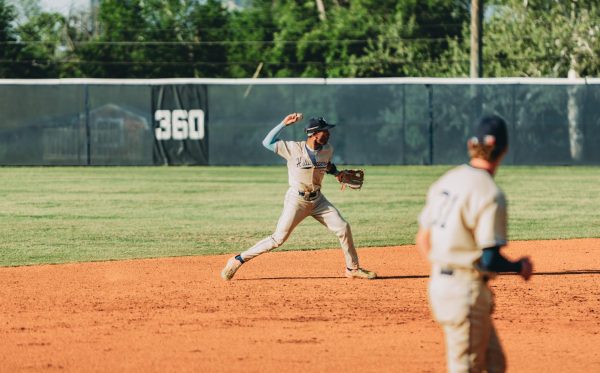Disk golf becomes popular pastime for little cash
It’s just past eight o’clock in the morning of the first big tournament of the year.
The freshly mown lawns piecing together each hole at McKinney Falls fill Robert Sadin’s nostrils with a sweet, familiar scent as he walks up from his dinged-up red pick-up truck. He confidently strolls up to the practice hole and draws from his bag not a golf club and ball, but a slimmed-down, slightly curved Frisbee. This isn’t traditional golf; this is disc golf.
The sport of disc golf has slowly penetrated Austin culture through the past few decades to become one of the most popular obscure sports the city has to offer, according to Sadin, a local competitive player.
The game has evolved from a gee-whiz hobby to a competitive league sponsored by the Professional Disc Golf Association. The sport is no recreation activity – there are serious competitors, and it’s beginning to catch on nationwide. According to the PDGA website, 135 tournaments are scheduled throughout the country in the month of October alone.
Disc golf has inherited many of its traits from its older, more mature brother, the Professional Golf Association. The object of the game is to navigate through an 18-hole course throwing Frisbee-inspired discs. Various obstacles challenge disc golfers to throw over the river and through the woods and over grandfather’s house if they have to.
Players hurl their disc from a tee-off section marking the beginning of each hole to a chain-ridden post that can be more than 400 feet away. Hitting the chains squarely almost always leaves discs safely in the basket. Like the game of golf, less is more. Whoever makes it through the course with the fewest total throws is declared the winner.
A traditional golfer’s luggage consists of different clubs with slight variations of the same model. The heads of the clubs are angled differently to produce either more lift or more drive for a particular shot. Disc golf is no different. Hundreds of custom-designed discs are on the market catering to specific shot selection, according to Amy Defillipi, manager of Disc Nation in Austin.
Driving discs are built with the laws of aerodynamics in mind. The weight and curvature of the driving discs allows for flight through the air faster and farther than any other discs, says Defillipi. These are ideal for the first throw on any given hole. The putter sports the same diameter as a driver, but is thicker and heavier. This allows for shorter, more accurate throws. Mid-range discs with varying thickness and weight make up everything in between.
Disc golf is also a less expensive alternative to golf, which can cost thousands of dollars to play seriosly.
“I always loved golf when I was kid. I loved everything about it,” Sadin said. “But when money was tight around the house, the closest I came to the seeing the green was in my living room watching the Golf Channel.”
The asking price for a round of traditional golf varies from public to private courses. Private courses generally require an initiation fee and an annual membership fee paid in monthly installments. The initiation fee can fall anywhere from $2,000 to $100,000, and annual dues tend to run in a range of $3,000 to $10,000 per year, according to the Golf Membership Spot. Members are free to play the course as often as they please.
Public courses are open to anybody at a flat rate for one 18-hole round. The Morris Williams Public Golf Course in Austin will cost a golfer $21.50 and an additional $12.50 for a cart if they’re not willing to lug their bulky, club-filled bags around by foot.
Public golf course prices vary based the quality and location of the course. The Shadow Creek public course in Las Vegas deals a $500 blow to your wallet for a single round, rendering it the most expensive public course in the United States, according to Forbes Magazine.
Disc golf follows this same private/public course set up, but is far more forgiving to those hard-earned Benjamins. Playing a round at a public course will only cost the player the price of the discs they are throwing and any other equipment they have. Private courses will run upward to $15, but the number of public courses greatly outweighs the number of private courses, according to the PGDA website.
“You don’t have to be a pro to go there and have fun,” said Sadin. “There’s a friendly atmosphere, and almost everyone out here is willing to throw a few tips your way.”
After watching four out of five discs soar within a couple of yards of the practice pin, Sadin looks on to the menacing barrier of trees blocking his path to the first hole. He looks back at his beat-up red Tundra and smiles. He might not be raking in the dough that old Tiger is used to, but that doesn’t matter. He has 18 holes to play.






